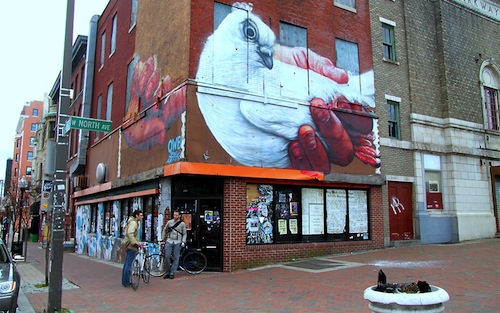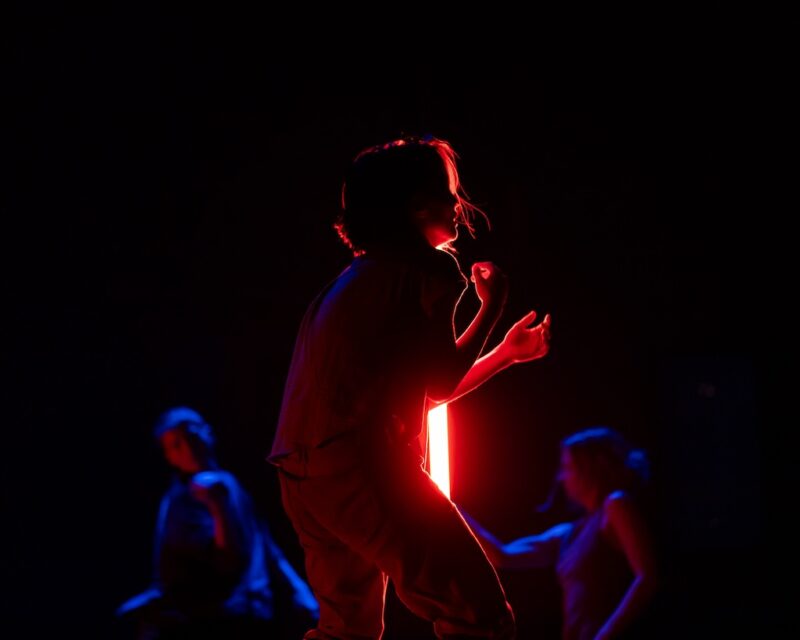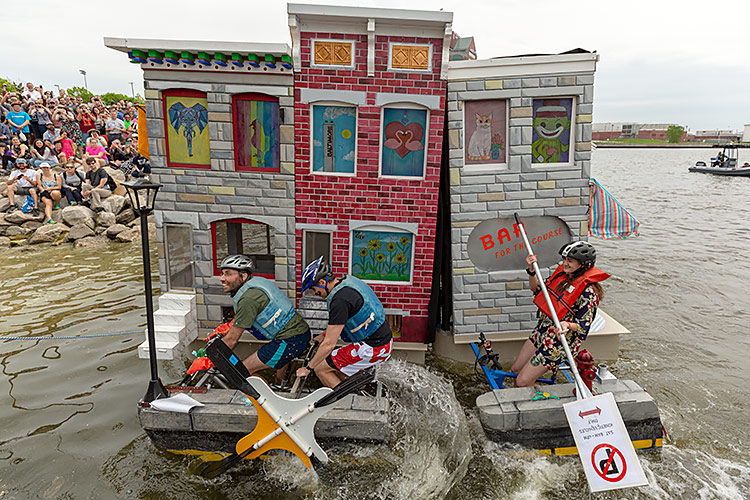Baltimore’s newest art space, The Station North Chicken Box, opens with a visual art exhibition on Tuesday, June 18. The exhibit, titled ‘C&H Exhibition’ features the work of Tim Horjus and Nicholas Cairns, the proprietors of C&H Restoration and Renovation LLC and eight other Baltimore artists. The company, and all the participating artists, are responsible for the new transformation of 1 W North Avenue from a fried chicken establishment to an arts venue.
C & H Restoration and Renovation specializes in the restoration and updating of historic homes. Located in the Station North Arts and Entertainment district in Baltimore, Maryland, C & H Restoration and Renovation is owned and operated by artists Nicholas Cairns and Timothy Horjus. Nick and Tim spent years working both as artists and in the trades prior to forming C & H in 2010. Featured artists include: Colin Benjamin, Nicholas Cairns, Susan Crawford, Tim Horjus, Josh Kagan, Jim Leach, Joseph McHugh, Catherine O’Connell, John Ralston, and Joshua Wade Smith.
Despite a very busy schedule Tim Horjus and Ben Stone, Executive Director of the Station North Arts and Entertainment District, agreed to a short interview with Bmoreart.
Cara Ober: How long have you been working on this project? What kinds of renovations did you need to do to the space? How was it funded?
Tim Horjus: The project started in December. There were a lot of hang ups with the city and occupancy. The entire former restaurant was intact and needed to be removed, grills, fryers, exhaust hoods, walk in freezer, and fire suppression systems. The electrical system was an absolute mess and quite a hazard. All these systems had to be safely removed and plumbing and electrical brought up to code. We then followed the plans laid out by Ziger/Snead architects, leaving the old tin ceiling and original sign in place and built out the walls, office space, and bathroom. The entire project was funded by the Station North Arts and Entertainment district. Ben Stone and Rebecca Chan secured a grant and launched a Kickstarter in order to make it happen.
Ben Stone: The project was funded by the Robert W. Deutsch Foundation, Carolyn Frenkil, Stephen Deets, and nearly 200 Kickstarter backers. We also received in-kind support from Ziger/Snead Architects, Sherwin Williams, MICA, and the Contemporary.
Cara Ober: What will the new Chicken Box art space be used for? Is it an art gallery or a theater? Who will be running the space?
Ben Stone: The Annex Theater Company will run their full season here, and we’ll program the space when they’re not using it. This might mean one night events on nights when they’re not running shows or art exhibitions when they’re between shows. We’re also using it as an information center and community meeting space.
CO: Why did you keep the original name – Chicken Box – for the new space? The name is classic Baltimore, of course, and reminds people of what used to be there…. but it also seems like a joke too.
TH: My take on it is that it is a nod to the history if the place and an attempt to convey the districts mission to enable artists to live and work in a district without simply gentrifying it.
BS: We need to come up with names for projects all the time, and I generally prefer names that already have some relevance in the community. When we started working on the space, people started calling it New York Fried Chicken, Kentucky Fried Chicken, and the Chicken Shack. I don’t really know where these names came from, except for NYFC, which was the previous tenant. We decided to switch Chicken Shack to Chicken Box because we’ve essentially created a box that we’re hoping to stuff full of programming for as long as we are able to occupy the space. It’s also a nod to the space’s history, just as the tin ceiling we revealed references its older history.
CO: How did you choose participating artists for this first exhibition? Is there any kind of theme or common thread in the show? How long will it be up?
TH: All of the artists in the show are employees of C&H Restoration and Renovation, the company that Nick and I operate. The theme I suppose would be the creative endeavors of our employees and ourselves.The show will be up for a few weeks.
BS: It’s going to be a very brief run because the Annex Theater is opening Argonne on July 4th.
CO: As an artist yourself AND also a professional home renovator, you are in tune with the architectural needs of artists. What were some of the updates made to the space with artists in mind?
TH: The renovation was planned out by the architects. I think their plan took in to account most of the needs of an arts space.
BS: Steve Ziger, who serves on the Station North board and has served on the board of the Contemporary and other arts organizations, has designed spaces for artists for years, so he and Jeremy Chinnis were natural fits for designing the space.




